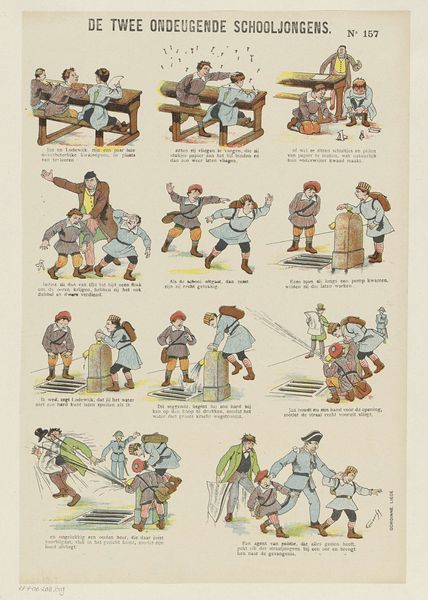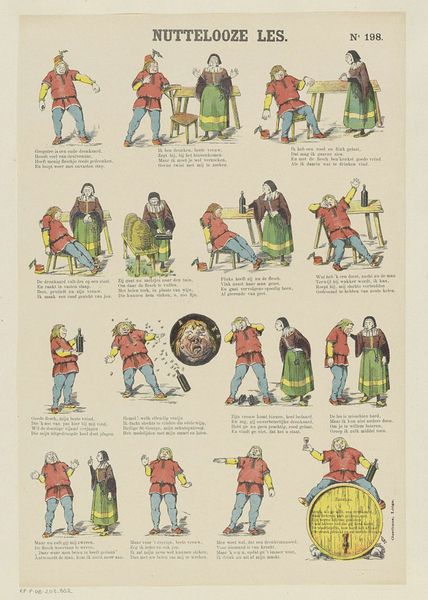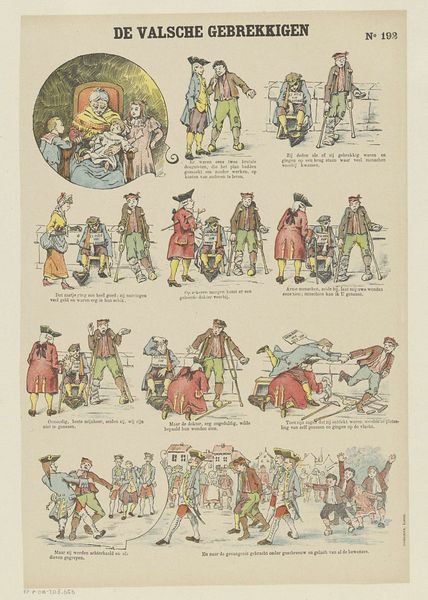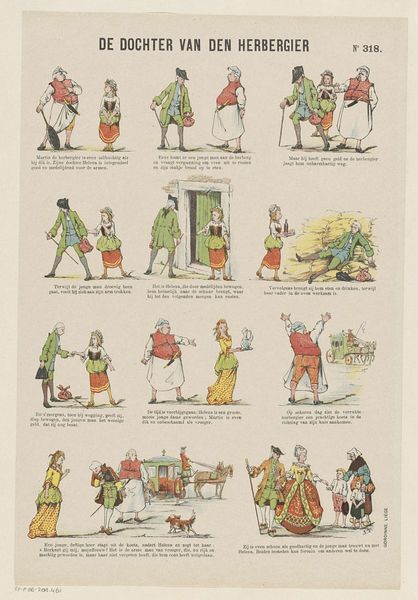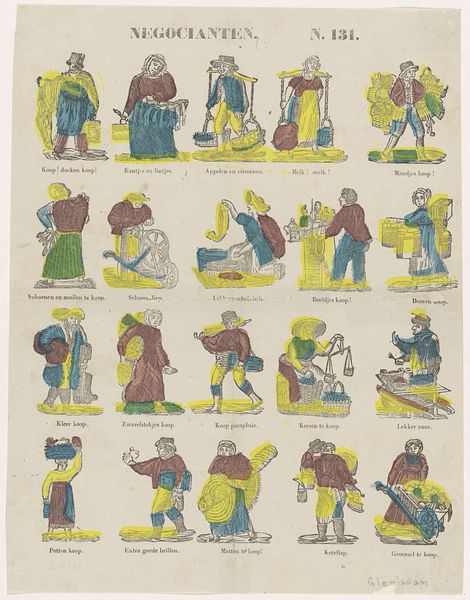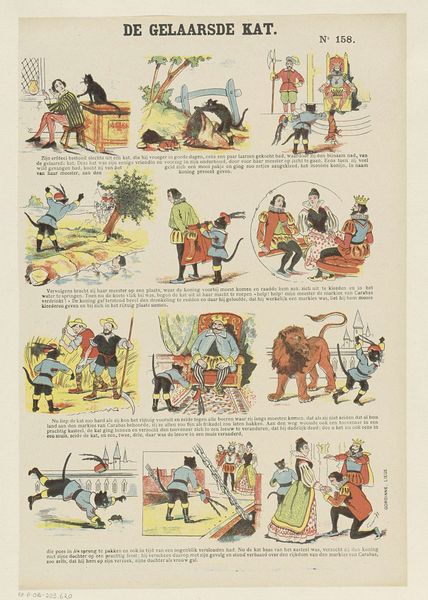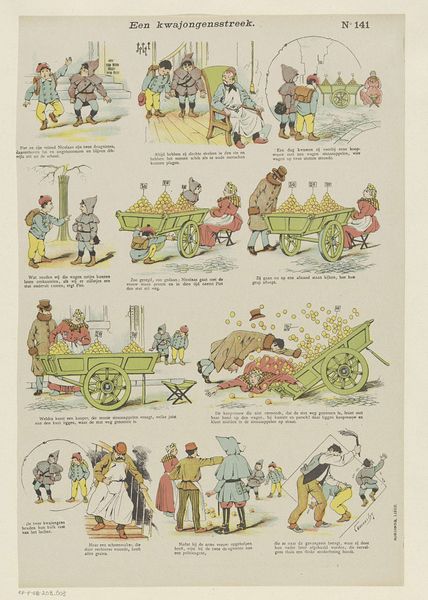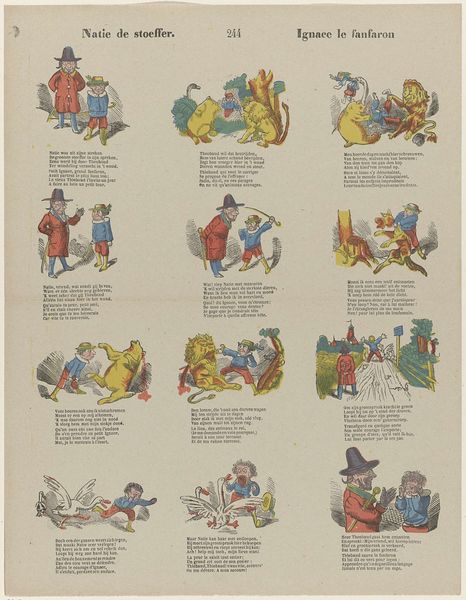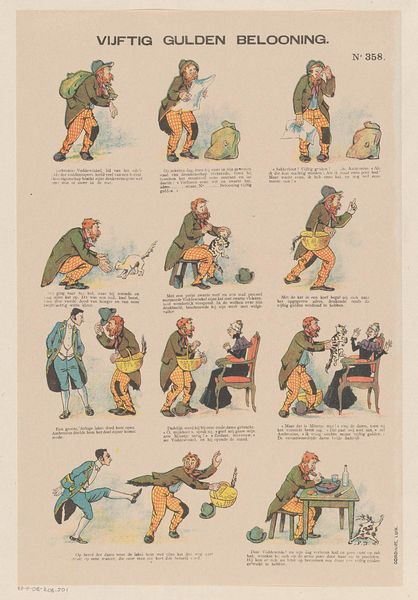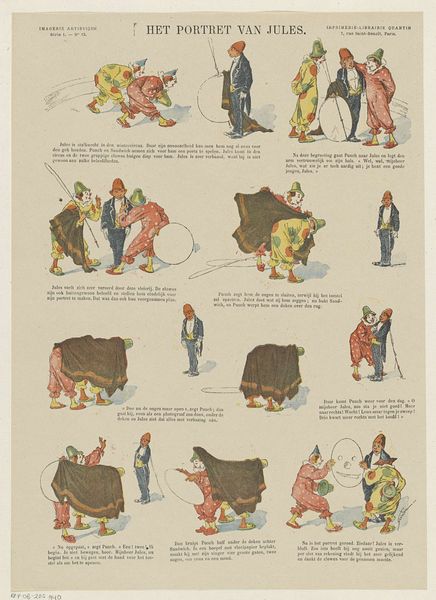
drawing, lithograph, print, ink, pen
#
drawing
#
art-nouveau
#
narrative-art
#
comic strip
#
lithograph
# print
#
asian-art
#
ink
#
comic
#
orientalism
#
pen
#
genre-painting
#
cartoon theme
Dimensions: height 367 mm, width 265 mm
Copyright: Rijks Museum: Open Domain
Editor: So, this lithograph and ink drawing from sometime between 1876 and 1890 is called "Iets uit China," or "Something from China," by Edouart Zier. It feels like an early comic strip, and it really plays into Orientalist themes. What do you make of this work, considering it's a print? Curator: I see a commentary on cultural exchange and the objectification of "the other" through the very means of its production and consumption. Consider the lithograph: a multiple, reproducible image. This was a booming period of print culture. These readily available images, disseminated widely, reinforced existing colonial power dynamics. The very act of creating and distributing this "comic," made from cheap material, becomes a form of consumption of another culture. What does this say about the labor involved in making this art, versus the labor depicted in the "narrative"? Editor: That’s fascinating. It positions the production itself as a sort of… commodity exploitation. It is really troubling, viewing it that way. I guess I had considered the style more than the context in how it was produced. Curator: Exactly. How does the use of drawing and print challenge our preconceived notions about "high art" versus commercial or folk art? The artist used common materials for this artwork and transformed images of human beings into an item available for purchase by the masses. How does this mass availability effect the perceived importance of the cultural scene the comic depicts? Editor: It really flattens and simplifies, and maybe even trivializes a culture when it’s reduced to a widely circulated, inexpensive image. It’s eye-opening to consider the broader impact and implications. Thanks for sharing your insight. Curator: My pleasure! Thinking about art in terms of materials, production, and circulation adds another crucial layer of understanding to how it functions within society.
Comments
No comments
Be the first to comment and join the conversation on the ultimate creative platform.

